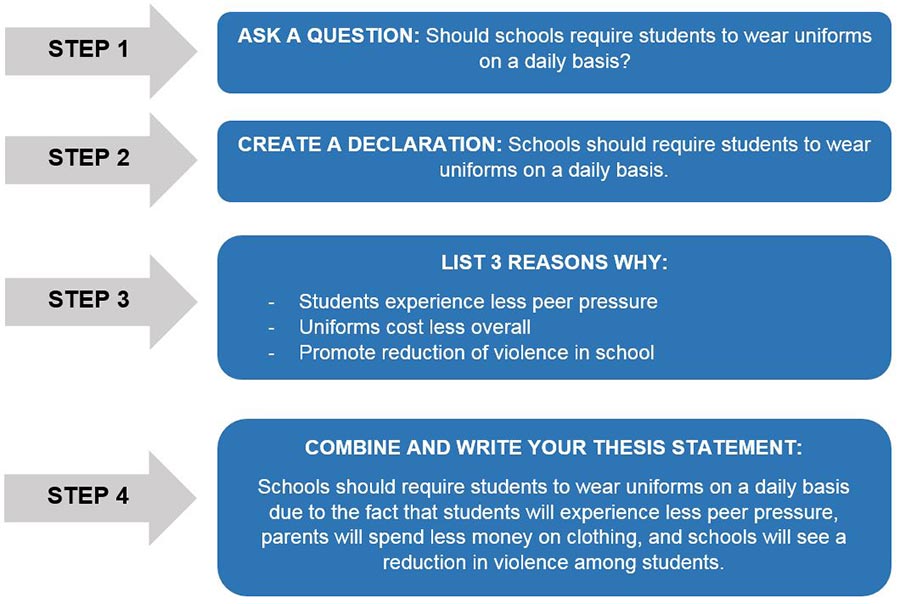
Whether you’re writing an essay, a research paper, or a blog post for class, your thesis statement is the core of your argument. It tells your reader exactly what you’re trying to say and why it matters. In this guide, you’ll learn how to write a clear, specific, and arguable claim that gives your writing direction and purpose.
Definition: Thesis statement
A thesis sentence, also known as an argumentative thesis statement or thesis sentence, is a single, clear sentence expressing your essay’s major idea or claim. It’s typically placed at the end of the thesis paragraph, also known as your introduction. More than just a summary, a strong claim takes a specific position on the topic and sets the direction for your entire paper. It answers the research question in mind and lets the reader know what to expect from your academic argument.
Printing Your Thesis With BachelorPrint
- High-quality bindings with customizable embossing
- 3D live preview to check your work before ordering
- Free express delivery
Configure your binding now!
Why is it important?
This statement acts as the roadmap for your essay. For the reader, it provides clarity and direction by summarizing the strong argument in one or two lines. It tells them what your paper explores and what stance you’re taking, so they know what to expect.
For you as the writer, it keeps your writing focused. It helps you avoid going off track and ensures that every body paragraph supports your central idea. Without a clear claim, your thesis will feel unorganized, and your reasoning will be unclear.
Note: A strong sentence keeps both you and your reader on the same page.
Characteristics
Not every central idea will carry your essay effectively. To build a strong argument, your statement needs to do more than just state a fact. It should meet three key criteria:
- Clear: A strong thesis uses clear, precise language that avoids confusion. Steer clear of vague wording or over-general statements that weaken your point.
- Specific: It focuses on a narrow part of the topic rather than general ideas. This helps guide the structure of your entire paragraph.
- Arguable: It presents a claim someone could reasonably disagree with. A strong claim invites discussion; it’s not just a fact.
Together, these qualities create a focused, persuasive foundation that gives your readers direction and guides them through your stronger thesis with clarity and confidence.
Step-by-step
Writing a claim takes more than answering the question prompt. A good first step is brainstorming. Use a pad of paper or digital doc to jot down ideas, review sources, and form a working draft.
Don’t rush. Reflect on the paper topic, then find an angle you can support with a solid piece of evidence.
Here’s a simple 4-step method to guide you through the process:
- Ask a rhetorical question.
- Turn it into a single sentence
- Support it with at least one strong piece of evidence.
- Place it at the end of your intro.

Common pitfalls
Even with a clear process, it’s easy to fall into a few common traps when writing a thesis statement. Here are some to watch out for:
This is a weak thesis statement. It doesn’t tell the reader what specific aspect of pollution you’ll focus on or what your position is.
This is too general to develop into a focused and convincing argument. Narrow it down with a cause-and-effect statement.
While technically true, it doesn’t present an argument or interpretation. It’s not something someone could reasonably disagree with.
This is an over-general statement that lacks nuance and leaves no room for real argument. What part of society? In what way?
How to avoid these mistakes
- Be specific about what you’re discussing and why it matters.
- Take a stance. Your thesis should express a clear opinion or interpretation.
- Test your thesis: Could someone reasonably disagree with this?
Strong & weak examples
A good thesis statement is specific, clear, original, and shows your position on the issue. Avoid uninteresting theses, vague words, or fact lists. Below are common requirements, with before-and-after examples to show what works and what doesn’t:
Examples:
❌ There are serious objections to today’s horror movies.
✅ Because modern cinematic techniques have allowed filmmakers to get more graphic, horror flicks have desensitized young American viewers to violence.
Examples:
❌ Although the timber wolf is a timid and gentle animal, it is being systematically exterminated.
✅ Although the timber wolf is a timid and gentle animal, it is being systematically exterminated because people wrongfully believe it to be a fierce and cold-blooded killer.
Examples:
❌ In this paper, I will discuss the relationship between fairy tales and early childhood.
✅ Not just empty stories for kids, fairy tales shed light on the psychology of young children.
Examples:
❌ Hoover’s administration was rocked by scandal.
✅ The many scandals of Hoover’s administration revealed basic problems with the Republican Party’s nominating process.
Examples:
❌ There are advantages and disadvantages to using statistics.
✅ Careful manipulation of data allows a researcher to use statistics to support any claim she desires.
Examples:
❌ Society needs to change.
✅ American educators must carefully decide whether the increased use of technology helps or hinders student learning.
Note: Always ask yourself: “So what?” If your thesis doesn’t spark curiosity or take a clear stance, revise until it does.
For detailed examples, take a look at our full article covering this in depth.
Thesis statement generator
If you’re stuck at the beginning of your writing process, a thesis statement generator can be a helpful tool. It asks a single question about your topic and guides you through a few simple prompts, like your main argument and supporting points, to help you build a structured draft thesis to work from.
When to use a generator:
- You don’t know where to start.
- You want a basic paragraph model to build on.
- You’re brainstorming ideas for your stance.
Note: Generators create a tentative version. To make it an engaging thesis statement, revise it for clarity, voice, and relevance.
Try the UAGC thesis generator. It’s simple, free, and student-friendly.
It’s not necessary to use one, but can be helpful. Think of it like training wheels: useful for getting started, but eventually, you’ll want to write your own to sound more natural and convincing.
FAQs
It sums up your thesis topics in 1–2 lines. It helps the reader follow your academic argument and ensures each body paragraph stays on track.
Yes! Check this guide and other reliable sources to see examples of analytical thesis statements, argumentative ones, and more.
Place it at the end of your introduction, after the background info, and just before the first body paragraph, for proper thesis format.
Be clear, specific, and argumentative. Start from a research question, turn it into a claim, and back it up with a piece of evidence.
- Choose your topic.
- Ask a rhetorical question.
- Write a statement.
- Support it with research.
- Revise into a stronger thesis.
